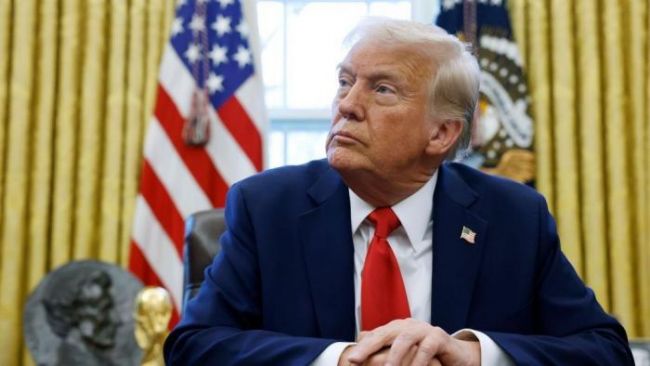On This Page
- Trump’s Bold New Vision for “Unbiased” AI in America
- What Are Trump’s 2025 Executive Orders on AI?
- Key Goals of the Trump AI Plan
- What This Means for Big Tech and Open-Source Developers
- Winners:
- Watch-outs:
- Notable Industry Reactions:
- How AI Neutrality Will Be “Tested”
- Geopolitical Strategy: Outcompeting China in the AI Race
- Critics Sound the Alarm: What’s Missing?
- Future of U.S. AI Policy: A Fork in the Road
- Final Thoughts: A Future of “Genius AI” or Controlled Narratives?
Trump’s Bold New Vision for “Unbiased” AI in America
Former U.S. President Donald Trump signed a sweeping AI Action Plan and three new executive orders aimed at reshaping the development, deployment, and regulation of artificial intelligence in the United States. Trump’s agenda directly targets what he calls "woke AI," vowing to end federal funding for any model that promotes DEI (Diversity, Equity, Inclusion), climate activism, or what he describes as left-wing cultural narratives.
The move signals a sharp ideological and regulatory shift—deregulating AI development while enforcing political neutrality tests on models used in public-sector applications.
What Are Trump’s 2025 Executive Orders on AI?
Trump’s administration unveiled:
- Executive Order 14179 — rescinds Biden's 2023 AI safety order (EO 14110), removing federal compliance guardrails.
- Contract Restrictions — bans government use of AI models deemed politically biased or promoting “radical left ideology.”
- Open Access to Federal Land & Power — allows tech firms to build AI infrastructure on public land with reduced environmental oversight.
These orders are part of a broader 28-page AI Action Plan that outlines a new federal strategy based on innovation, deregulation, and geopolitical competition.
Key Goals of the Trump AI Plan
| Goal | Policy Approach |
| Eliminate “Woke AI” | Restrict use of AI models that reference DEI, CRT, climate change, gender identity |
| Boost Open-Source AI | Promote U.S.-made open models (like LLaMA, Mistral) via compute grants |
| Accelerate Infrastructure | Fast-track data center construction, loosen environmental checks |
| Unify Regulation | Create one national AI framework, override conflicting state laws |
| Expand Global Reach | Support AI exports to allies, challenge China’s dominance |
Trump positioned the plan as a “patriotic defense of truth in technology”, arguing that models trained on DEI principles distort facts and erode American values.
What This Means for Big Tech and Open-Source Developers
Winners:
- Startups & open-source developers gain increased access to compute infrastructure and fewer legal hurdles.
- xAI (Elon Musk’s company) and right-leaning model developers like Grok could thrive under new standards promoting “neutral” outputs.
Watch-outs:
- OpenAI, Google DeepMind, Meta and others may face scrutiny or be sidelined from federal contracts if their models reflect liberal biases.
- Researchers & AI ethicists worry about the loss of public safety mandates and the spread of unchecked outputs.
Notable Industry Reactions:
- Some industry groups welcome the removal of “overregulation.”
- Others fear the chilling effect of ideological testing on innovation and freedom of expression.
How AI Neutrality Will Be “Tested”
A controversial feature of Trump’s plan is a federal audit system that flags AI models whose outputs:
_1753341340.png)
- Prioritize gender ideology, climate narratives, or racial bias discussions.
- Reference “misinformation” or “harmful speech” in ways seen as suppressing right-leaning views.
- Federal agencies will now award contracts only to “non-woke” models, based on tests of neutrality, factual outputs, and alignment with “constitutional values.”
Geopolitical Strategy: Outcompeting China in the AI Race
Trump’s AI framework isn’t just about domestic politics—it’s about global competition. The plan:
- Pushes AI model exports to U.S. allies, reversing Biden-era chip and software restrictions.
- Incentivizes American companies to build and train large-scale models at home, reducing reliance on foreign cloud providers.
- Creates export-friendly licensing pathways for startups that want to commercialize AI abroad.
By prioritizing tech nationalism over global regulation, Trump is betting on fast growth to outpace Chinese advances in LLMs and robotics.
Critics Sound the Alarm: What’s Missing?
Environmental Concerns:
- Fast-tracking data centers on federal land may harm ecosystems.
- Relaxing reviews under NEPA (National Environmental Policy Act) has drawn protests.
Safety Oversight Gaps:
- No mandatory safety audits or red teaming required.
- Open-source models with minimal safeguards may lead to misuse.
Legal Challenges:
- The term “woke AI” lacks legal clarity—could be weaponized politically.
- Potential First Amendment challenges if federal agencies ban tools based on output ideology.
Future of U.S. AI Policy: A Fork in the Road
Trump’s AI orders mark a dramatic pivot from prior governance—steering AI development away from caution and toward acceleration, with a heavy overlay of culture war. If re-elected, Trump’s strategy could cement a new era where ideological purity tests and infrastructure-first growth replace safety, fairness, and ethical innovation.
Yet the success of this approach will depend on:
- How tech giants and startups react to the new federal incentives.
- Whether global markets embrace U.S. open-source exports under these terms.
- How the courts rule on constitutionality and overreach in AI censorship claims.
Final Thoughts: A Future of “Genius AI” or Controlled Narratives?
Trump’s campaign to replace “woke AI” with “truthful,” American-centric models may energize segments of the tech world—but it also risks fragmenting the AI landscape further. By inserting political litmus tests into technical systems, the line between AI innovation and ideological conformity becomes dangerously thin.
As the U.S. AI race intensifies, the world watches to see whether deregulation and culture politics will drive American dominance—or derail it.
Post Comment
Be the first to post comment!





